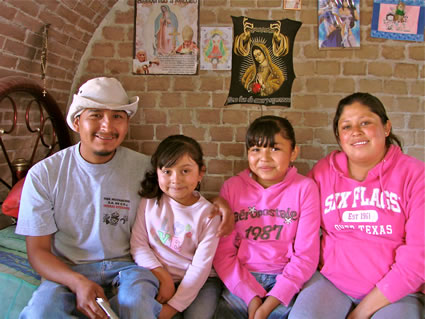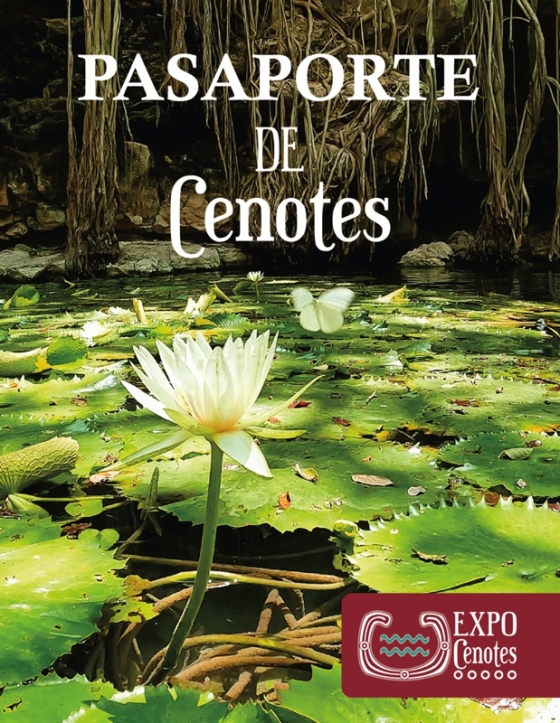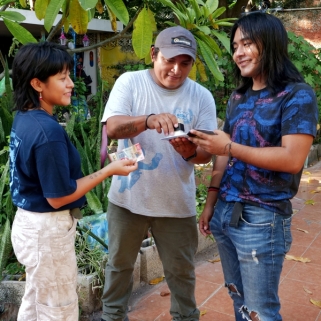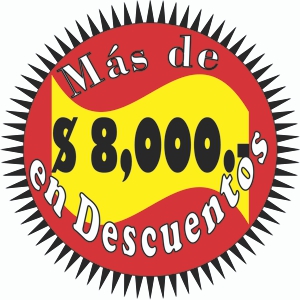
After Years of Planning, La Plancha Park is Officially Open

If the Biciruta seemed sparsely populated this morning, there’s good reason. Just blocks away, the president of Mexico was inaugurating Parque La Plancha.
After all these years, La Plancha is officially a park. Perhaps not as initially conceived, but nonetheless a park.

President Andrés Manuel López Obrador joined Yucatán Gov. Mauricio Vila Dosal to celebrate its opening.
The day is 30 years after neighborhood groups first proposed a more dignified purpose for the 50-acre former railyard, which hadn’t seen a crowd since a 2011 Shakira concert. The land was Centro’s largest vacant parcel and the city’s last chance to build a “Central Park” modeled on New York’s and Mexico City’s. And a park would be preferred over highrises, a factory, or whatever large complex would go up instead.

AMLO’s interest in the park has to do with his own pet project, the Tren Maya. The “Mayan Train” won’t connect directly to La Plancha, as was once conceived, but an electric train will link the park with the closest Tren Maya station at Teya, seven miles away.
López Obrador characterized the Tren Maya as the world’s most important public works project.

Regarding La Plancha Park, López Obrador praised the work carried out by the military workers. They did it very well, and at a low price, he said.
A neighborhood group had proposed a more forested La Plancha, emphasizing its role as a “green lung” in a concrete jungle. A master plan was produced, and a previous administration started clearing the field of rubbish in early 2018. When work mysteriously stopped, neighbors tried to keep the momentum going, to no avail.

So now the park is a reality. While 3,000 trees have been planted in the park, two museums, an artificial lake, fountains, a 5,000-seat amphitheater, covered and elevated walkways, a food market, and a skate park are among the things that share space with natural flora and fauna. To monitor any mischief, 129 video surveillance cameras were installed at La Plancha.
The project had an October 2024 deadline, but “they managed to do it in only 14 months,” said Vila.

The state and federal government reportedly shared responsibility for the park’s price tag of MX$1.3 billion, or about US$75 million.
After the ceremony, visitors in the food market area were allowed to explore the park. A crowd of children immediately invaded the children’s play area.
La Plancha covers several blocks north of the historic former train station on Calle 55 between Calle 46 and Calle 48. A major entrance leads directly from the Calle 47 Gastronomic Corridor, crossing 48.
2023 Aguinaldo & Vacation Pay Rules for Mexico
Posted on November 21, 2023 by yucalandia

Nov. 21, 2023
AGUINALDOs … and Vacation Days-Pay …
As Christmas holiday chatzkies are appearing on store shelves …. as we make our holiday plans … It’s time to remember our beloved household help and employees (including nuestro querido “muchachas” y “mozos”).
Please plan ahead to pay them their end of the year Aguinaldos and Vacation Pay by at least December 20’th …. and Plan to also give them paid-Vacation days OFF for the year … Ignore the gringo-myths: The Aguinaldo is NOT a optional bonus. Our Mexican workers and their families count-on and depend on these critical annual payments owed to them, by law.
Because the Annual vacation pay & Aguinaldo payments are mandatory, you can pay them whenever you want … like even ~NOW~ … so they can enjoy using those $$ for the upcoming holiday sales !
Aguinaldo Calculation:
Basically the Aguinaldo is 15 days of pay. (calculated on a 7 day work wk) – so it formally 2 weeks of pay, plus another day of “Daily Rate Pay”.
Specifically, the annual aguinaldo payment is precisely 15 days of “Daily Rate pay”. … Note that “Daily Rate pay” is a bit peculiar, because you take their weekly pay, and divide by 7 days.
Example, if your cleaning person is paid $400 pesos each time, for 2 times a week, then their “Daily Rate Pay” is => $800/7 days = $114.29 per day.
This means a 15 day Aguinaldo for her would be:
15 days x $114.29/day = $1,714.29 Aguinaldo for the Year
It is not a Christmas bonus. It is a mandatory wage payment that is due by the 20’th of December. The aguinaldo is equivalent to at least “15 days wages”, and may be pro-rated if the employee has been working for you for less than a full year.
If the person only worked part time or just some months of the year ... One method is to simply divide their TOTAL annual pay $$ by 365 days … to get the “Daily Rate Pay” … and then MULTIPLY that part-year-adjusted “Daily Rate Pay” by 15 days.
Sidelight Note. The “Daily Rate” is based on a full week. For example, if your maid only works two days per week, and gets paid and EXAMPLE of $700 pesos per week ($350 pesos per day of work). You take the weeks salary of $700 divided by 7
=> $100 pesos is the Daily Rate.

Aguinaldo Described a Different Way:
** If a worker is hired to work by the week, the “Daily Rate” equals their weekly pay … divided by 7. If he / she is hired by the month, the “Daily Rate” is the monthly amount divided by 30.
Note that if they work only a part year, and you don’t know the total amount paid during the whole year:
An alternate way of calculating the aguinaldo is determined by multiplying the total days they worked in current year … times 15 … then divide by 365 days .. and then finally … multiply that value by the daily rate:
For a part-year worker coming in for 2 days a month for 9 months =>
18 days total worked … x … 15 days of Aguinaldo = 270
270 / 365 = 0.7392 … 0.74 x $Daily Rate ($100 pesos/day?) = $ 74 pesos
==================================
Vacation Pay – 2023 Update !
Vacation pay for current year worked. … Remember that this is the official Mexican Labor Law’s “Daily Rate” ** (see above or below) … and remember they should also receive this pay for all past years worked.
1st year – 12 days of Daily Rate pay**
2 years – 14 days
3 years – 16 days
4 years – 18 days
5 years – 20 days
6 to 10 years – 22 days
11 to 15 years – 24 days
16 to 20 years – 26 days
21 to 25 years – 28 days
26 to 30 years – 30 days
31 to 36 years – 32 days
**Daily Rate pay is based on a 7 day work-week calculation. Either divide their weekly pay by 7 to get their Daily Rate pay … or .. Calculate the full year pay, and divide by 365 days to get the Daily Rate pay.
Happy Holidays !
 PasaporteIn yet another advance in promoting Maya communities, and developing the economies of our very-poor Maya communities, our government is creating a program of “naturally sustainable Eco-Tourism”, that will be accessible using just a single “Cenote Passport” …This new Eco-tourism effort will focus on educating visitors on traditional Mayan culture and education on the environments where the Maya people live … including focusing on visiting 10 “ojos de agua” that will share in our government’s conservation programs.Once you purchase it, “El Pasaporte de Cenotes” will function by “giving automatic access” as “2 for the price of 1″ entrance to the :”cuerpos de agua” at PasaporteIn yet another advance in promoting Maya communities, and developing the economies of our very-poor Maya communities, our government is creating a program of “naturally sustainable Eco-Tourism”, that will be accessible using just a single “Cenote Passport” …This new Eco-tourism effort will focus on educating visitors on traditional Mayan culture and education on the environments where the Maya people live … including focusing on visiting 10 “ojos de agua” that will share in our government’s conservation programs.Once you purchase it, “El Pasaporte de Cenotes” will function by “giving automatic access” as “2 for the price of 1″ entrance to the :”cuerpos de agua” atNohmozon, Nayah, Su Hem, Grutas y Cenotes Tzabnah (in the Tecoh Municipality), Nu’Ku’Uch, Dzo’No’Ot, Pool Uinic, Che’en Yuc, Mani, and Chan y Cleotide (en Homun).This special 2 for 1 promotion will only be for THE FIRST VISIT – because they will be stamping your passport, just like they stamp passports on the peregrinos Ruta de Santiago de Compostela in Spain & France.Your “Cenotes Passport” also allows you to sign up on-line to receive both discounts and notices on various future Eco-tourism, future environmental-protection, and other related (“allied”) environmentally-friendly activities, and environmental conservation activities.  When you complete your cycle of visiting all 10 of the featured cenotes, you will be invited to be a part of future “Expos Cenotes” gatherings … AND receive a “~free surprise gift~ ” !One goal of the new programs is to gradually get visitors to visit Maya areas and our cenotes “responsibly” … A second set of goals is to promote visitors to experience & enjoy traditional Maya foods** … and to buy traditional Mayan goods (and chatzkies) produced by genuine local Maya artisans.**Example… Poc Chuc is NOT Mayan food … It’s a recent creation by a restaurant in Tizimin ?The Cenotes Passport will cost just $280 pesos … The Cenotes Passport can be purchased When you complete your cycle of visiting all 10 of the featured cenotes, you will be invited to be a part of future “Expos Cenotes” gatherings … AND receive a “~free surprise gift~ ” !One goal of the new programs is to gradually get visitors to visit Maya areas and our cenotes “responsibly” … A second set of goals is to promote visitors to experience & enjoy traditional Maya foods** … and to buy traditional Mayan goods (and chatzkies) produced by genuine local Maya artisans.**Example… Poc Chuc is NOT Mayan food … It’s a recent creation by a restaurant in Tizimin ?The Cenotes Passport will cost just $280 pesos … The Cenotes Passport can be purchasedfrom the following companies-groups: “Va por la Tierra” … “Cenoteando” … Kalanbio … Buzos Técnico Deportivos de Yucatán … AND at the upcoming “Expo Cenotes” in Siglo XXI this coming weekend.Become an official Científico Ciudadano … “Scientific Citizen” !More $$ Details & More Program Information: There will be more than $8,000 pesos of total discounts available on various activities, 2×1 & 3×2 discounts to participate in environmental seminars, economic development seminars for improving poor Maya communities, Workshops on Environmental & Social-Cultural studies, including Certifications in these various areas … PLUS another $700 pesos in discounts on entering the 10 featured cenotes …Cheers! Dr. Steve= = = = = = = = Final Notes:“El pasaporte trae consigo más de $ 8,000.00 pesos en descuentos en las Entradas a los Cenotes, en Cursos y Certificaciones medioambientales. Durante el año, se brindarán más promociones a los usuarios del Pasaporte.”  Sources: https://expocenotes.com/pasaporte/and the Nov. 13 2023 Matutina – as reported in the Nov. 13, 2023 “La Jornada Maya”* * * *Feel free to copy while giving proper attribution: YucaLandia/Surviving Yucatan. Sources: https://expocenotes.com/pasaporte/and the Nov. 13 2023 Matutina – as reported in the Nov. 13, 2023 “La Jornada Maya”* * * *Feel free to copy while giving proper attribution: YucaLandia/Surviving Yucatan.© Steven M. Fry |
ByCarlos Rosado van der Gracht
November 15, 2023
Over the past few years, change has been ramping up in the coastal city of Progreso.
A photo of Progreso in the early 20th century shows a lighthouse and El Madrileño restaurant — both of which remain today. Photo: Fototeca Pedro Guerra
New restaurants with fancy menus and hotels have slowly but surely replaced most fried fish joints and inns, at least on the oceanfront boardwalk.
Several traditional seafood restaurants can still be found in Progreso, but to find them, it’s necessary to go a little further into town. Photo: Carlos Rosado van der Gracht / Yucatán Magazine
The presence of non-Yucatecos is, of course, nothing new in Progreso. Still, the increase in the construction of luxury homes, hotels, and rental properties catering to folks from elsewhere in Mexico, as well as the United States, Europe, and Canada, is striking.
Since Mérida’s Carnaval festivities moved to the Xmatkuil fairgrounds, Progreso’s Carnaval has grown in popularity yearly. Photo: Carlos Rosado van der Gracht / Yucatán Magazine
Of course, this does not mean that Yucatecos no longer frequent Progreso. Now, most day-trippers from Mérida and other nearby cities are more likely to be seen on the beach with coolers and beers purchased at convenience stores than eating on the Malecon.
Folks from Mérida have long thought of Progreso as “their beach,” much to the chagrin of locals, who nonetheless depend largely on the constant influx of visitors. Photo: Carlos Rosado van der Gracht / Yucatán Magazine
Progreso was founded in 1872 to create a seaport closer to Mérida than the older port of Sisal. The city was named “Progreso” (meaning “progress” in Spanish) to reflect its founders’ hopes for the city’s future.
Progreso’s port has proven to be a great success and boasts the world’s largest pier, soon home to the largest shipyard in the Americas. Photo: Carlos Rosado van der Gracht / Yucatán Magazine
In 1881, a train departing from Mérida’s La Mejorada neighborhood began offering cargo and passenger service to Progreso — establishing the then-sleepy town as a popular beach destination for folks from Mérida.
Train connectivity between Mérida and Progreso began to go down during the second half of the 20th century until 1995. Photo: Rosado family archive
It also became common for affluent and middle-class families in Mérida to own beach houses in Progreso, which were enjoyed during the summer, as well as Easter and the occasional long weekend.
Several 20th-century beach homes belonging to folks from Mérida have since been converted into restaurants or hotels. Photo: Carlos Rosado van der Gracht / Yucatán Magazine
But as companies in Mérida began to offer less and less time off to their workers, many of these beach homes fell into disrepair.
Progreso has considerably improved its tourism infrastructure with projects such as El Muelle de Chocolate, and several photo-op locations to attract visitors. Photo: Carlos Rosado van der Gracht / Yucatán Magazine
While it’s a good thing that these old homes are being rescued, the construction of new enormous towers and resorts along Progreso and its surrounding communities is striking.
Though less than a decade ago there were hardly any buildings with more than three or four floors, dozens of towers more than 10 stories tall have begun to dot the landscape, with more on the drawing board.
Construction in Telchac looms over the wetlands that flocks of flamingos call home. Photo: Carlos Rosado van der Gracht / Yucatán Magazine
Blame a “rules are meant to be broken” attitude.
Transparency when it comes to approving the construction of these types of developments is virtually nil.
“Here in Progreso, there is absolutely no public consultation, although these changes affect us all. One day there is nothing and the next trailers and huge signs are announcing the construction of new condos,” Mary Gutiérrez told Diario de Yucatán.
Land being cleared on the side of the highway between Progreso and Telchac by machete and fire. Photo: Carlos Rosado van der Gracht / Yucatán Magazine
Among the concerns most cited by locals is the municipality’s inability to keep up with potable water demands, rolling blackouts, a lack of parking, and erosion.
Erosion is a serious problem on Yucatán’s northern coast as the ocean threatens to swallow up beachfront homes. Photo: Carlos Rosado van der Gracht / Yucatán Magazine
“People have just begun to wake up to the fact that tons of sand are being moved to create beachfront for new developments, but ultimately history is doomed to repeat itself,”Orlando Cachon Pinto commented on Facebook.
During a recent interview, Enrique Tava Griffin, president of Yucatán’s construction association argued that Development along the coast is inevitable, but that the construction of towers is the best way forward as it makes it easier for communities to avoid sprawl and offers access to basic services.
Then there are also the social justice issues. As Progreso and other nearby communities like Telchac and Chixulub continue to grow, so is the divide between the haves and the have-nots.
When driving along the coast it’s hard to miss the precariousness of hundreds of constructions inhabited by Progreso’s poorest nationals. Photo: Carlos Rosado van der Gracht / Yucatán Magazine
In many ways, Progreso is better today than ever before, at least as a tourism destination. But a lack of regulation, transparency, and growing inequality mean that these changes are not to be enjoyed by everyone.
Carlos Rosado van der GrachtBorn in Mérida, Carlos Rosado van der Gracht is a Mexican/Canadian blogger, photographer and adventure expedition leader. He holds degrees in multimedia, philosophy, and translation from universities in Mexico, Canada and Norway.
Fatal accident reported in Mérida-Cancún, near the Mayan Train bridge
November 5, 2023

A spectacular accident occurred on Saturday night on the Mérida-Cancún highway, where several injuries and one person were reported dead.
The fatal accident occurred near Teya, near the new Mayan Train bridge, where emergency forces were mobilized.
It turned out that a van from Telchaquillo was heading to Teya when a driver coming from Cancun, going down the bridge towards Mérida, crossed into her lane.
After the strong impact, the public transport unit was destroyed from the front and also the car. People who passed by the site, upon seeing the situation, quickly called the emergency number for help.
The movement of five ambulances, fire personnel and police could be seen at the scene. People in the bus were trapped in the accident.
It turned out that one person died in the accident.
The road was closed to vehicular traffic, and both emergency forces and officials began the necessary procedures, since vehicular chaos was also recorded in the area.
This Progreso Live/Work Dream Home is Move-In Ready, and Near the Beach
ByYucatán Magazine November 6, 2023

Walk from your beautiful Progreso mansion to the beach in a minute. And it’s one of the nicest beaches in Progreso, in a tranquil part of the city’s east side.
Or just enjoy the view of the water and nearby rooftops from the private third-floor rooftop terrace. This house is just two blocks from the boardwalk, Parque de la Paz, and the new dinosaur museum.

The home was restored as a private residence after the ground floor served as a well-loved bistro. The restaurant area would convert back very easily as living rooms. Or maybe the new owner will want to start another restaurant in the home, dubbed “Casa Miguel.”
All four bathrooms are equipped with a Jacuzzi tub. The kitchen is a chef’s dream — and worked quite well for the chef-owner — with plenty of space plus a separate pantry. It connects to the back patio, which is large enough for hosting grand dinner parties, and has a lovely lap pool with waterfall.
Some furniture and professional-grade kitchen appliances are included.

So, this mansion can be a home or a business, or a combination of both.
The 19 solar panels on the roof are keeping costs down, which have kept the electric bill to around MX$52 — under US$3 — every 60 days.
The house will be repainted, and watch the online listing for a video.
Casa Miguel is offered at US$649,000. To see this property, contact Mexico International sales agent Dr. Leroy Osmon at 999-125-6196 or email leroy.osmon@gmail.com
Mayan Train Will Be Financed by charging 38 dollars to each foreign touris

Morena and her allies in the Chamber of Deputies created a new trust to guarantee the operation of the Tren Maya company, through which it will be able to access more than 24 billion pesos per year.
At the request of the federal government, legislators endorsed a new fund with a fee of 687 pesos (about $38) charged to each foreign tourist, according to Sipse.
Additionally, the ruling party deputies determined that the private concessionaires that operate the airports in the country will have to contribute more resources to the Federation Treasury to strengthen the airport companies that the armed forces have under their control.
Despite this new trust, the Secretariat of National Defense (Sedena) has recognized that the company Tren Maya SA de CV will not be consolidated until 2042.
With the completion of the Mayan Train works in section 5, there will be thousands of workers who will be unemployed, so the Revolutionary Confederation of Workers and Peasants (CROC) expects that they will be hired by the hotels and thus be able to complete their staff, as REPORTUR.mx collects (They expect Mayan Train workers to be hired by hotels).
Source: Reportur
Recent Comments